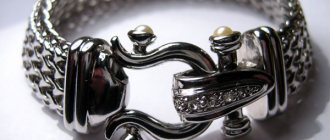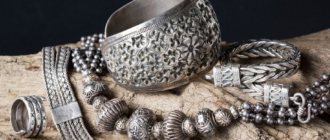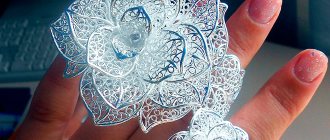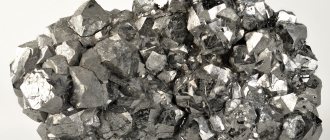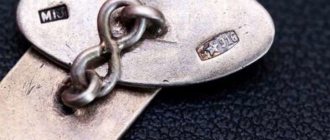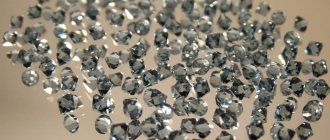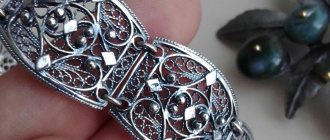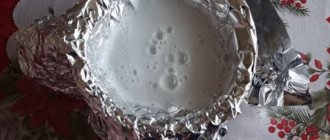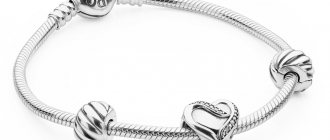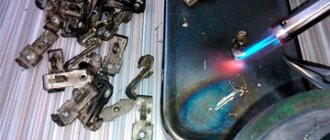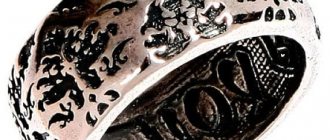Do electroplating
, like any other business, you can do it anywhere.
But it is still advisable to slightly equip your workplace. First of all, there are two things to consider. During your work, you will deal with concentrated acids and other caustic substances. And the second point is that at various stages of galvanization
all sorts of poisonous gases, caustic vapors and other fumes will be released. Therefore, it is advisable to arrange a place where it is difficult to burn anything and there should be ventilation.
The first thought is the kitchen. Practical advice right away. If there is a hood in the kitchen, it is very good, but there should not be filters on the hood!
The author's first experiment to produce concentrated sulfuric acid ended with all sorts of dust and debris, such as nets and fibers, starting to fall out of the hood. It was the sulfuric acid vapor that destroyed the filter and, therefore, we had to buy a hood. So again, good ventilation is the key to the success of the entire electroplating
.
1. Respirator.
A very necessary thing. As we already mentioned, during galvanization
a lot of gaseous nasties are released, which are not good for health. Let's add rubber gloves here. It's better to find autopsy rooms. They are quite durable and at the same time not rough. Working without gloves can result in chemical burns and other problems for the skin of your hands. I highly recommend an apron made of thick oilcloth. Be sure to wear some slippers on your feet.
2. Galvanic
station.
You need a power supply for a current of 30-50A, with an ammeter, smooth adjustment and preferably stabilization of the current strength. It is enough to have a voltage in the range of 12-24V. The diagram is easy to find on the Internet. You need 2 pieces of cable, with a larger area, to connect the anode and the part to the power supply. If you take a cable with a smaller area, it will get very hot, since the current is high. You need a non-metallic container of such volume that your entire part can fit there, plus an anode with the same area. You can use a plastic bowl as a container. If the electrolyte is not stored in a basin, it will last a long time, it has been tested.
3. Heating devices.
I do not recommend using open fire for heating. Not because we are doing something explosive, no. It’s just that with an open fire it’s hard to control the temperature; you can accidentally boil a solution that doesn’t need to be boiled at all, etc. In addition, there is a risk of damaging an expensive gas stove with some kind of solution. Therefore, we will use an electric stove. You will also need an iron with a working thermostat so that you can set the sole temperature to 80 degrees. You will need a sand bath.
4. Dishes.
It is better, of course, to find somewhere a set of chemical utensils (flasks, cups, boiling pots). But if not, you can use any household glass. You will also need a porcelain cup for evaporation, preferably with a spherical bottom. It is advisable to find glass bottles with a ground-in lid for storing reagents and electrolytes.
5. Measuring equipment.
First of all, you need scales, since you will have to measure the reagents with an accuracy of up to a gram. If possible, use factory ones; if not, you can make your own. Take a steel rod d=10 mm, 1=200 mm. Find the middle exactly and drill a hole for hanging. Cut a thread of 15 millimeters on both ends of the rod and screw on the nuts. Immediately behind the thread, drill holes for hanging the cups. Under the suspension of the scales, attach the knitting needle at an angle of 90 degrees (you need to accurately measure the angle). The spoke is a scale indicator. You hang the cups. Next, hang the scales. Use the nuts to adjust the position; it is important that the spoke is directed vertically downwards (you can check it with a plumb line). All scales are ready. All that remains is to find the weights and you can “weigh out”. You can use old Soviet coins as weights. Their denomination corresponds quite accurately to the weight (1 kopeck - 1 g, 2 kopecks - 2 g, 3 kopecks - 3 g, 5 kopecks - 5 g).
And finally, you need a thermometer. Scale range 10-130 degrees.
Silver plating at home: a review of silver plating methods
Silvering of metal products can also be done at home. This procedure can be carried out qualitatively in various ways, and for the practical implementation of many of them you do not need to look for and buy expensive chemicals. You can prepare a solution for silvering copper products using available products, even at home.
The photo shows how the appearance of the product changes after silvering
Products coated with a layer of silver, like gold-plated metal, look very presentable, which explains the high popularity of this technological operation.
Why is rhodium so expensive?
Rhodium is a noble precious metal from the group of platinum metals. It was first discovered and described in 1803 in England while studying the properties of platinum ores. In the earth's crust, its content is extremely small - 1 * 10 -7%, and most of it (about 80%) is located in North and South America, while no more than 31 tons are mined per year. This explains its high cost as a rare earth element. These days, the cost of rhodium is significantly higher than the cost of gold, silver and platinum.
Jewelry made from pure rhodium will be unaffordable for the mass buyer and will remain uselessly sparkling in store windows. And this is the main reason why it is inappropriate to use rhodium in its pure form. In addition, pure rhodium is a rather brittle metal and can easily break. The technology of thin-layer coating of silver products with rhodium is much more widely used, which gives a special shine and protection from mechanical stress to the resulting jewelry, which is explained by the high strength of this metal.
In addition to its strength, rhodium is characterized by high chemical resistance to strong oxidizing agents, which leads to another important use of rhodium as a component of catalysts for the production of nitric acid and as part of the catalytic converter in cars to reduce emissions of carbon monoxide and incompletely burned fuel particles.
How silvering of copper and copper alloys is performed
The silvering process has a number of features that must be taken into account when performing it. These features are as follows.
- Silvering, as a rule, is applied to products made of copper, brass, aluminum, steel and a number of other alloys. Metallic silver is released from the solution for silvering upon contact with these metals and alloys, which makes it possible to effectively carry out such a technological process.
- The easiest way to plating silver is light metal. To prevent the darker surface of the base metal from showing through from under the applied silver layer, the thickness of such a layer should be at least 10–15 micrometers.
- Silvering at home or at a production site must be done in well-ventilated areas.
- In order for the silvering of brass, copper or any other metal to be of high quality, the surface to be treated must first be degreased.
- The paste used for silvering is applied using a piece of soft cloth or leather.
Radiation or rhodium plating of silver - where is the mistake?
Rhodium is a chemical element (represented by the symbol Rh) that people who have forgotten their school chemistry course tend to confuse this precious metal with radium (Ra), which is a radioactive metal. Therefore, you can often come across such an erroneous phrase as “radiated silver”.
This error is explained by the similar spelling and sound of these two elements. By the way, the name “rhodium” comes from the Greek word for rose, mainly due to the fact that many compounds of this metal were red or dark pink in color.
Chemical method
One of the ways in which chemical silver plating is performed is that the metal surface is treated with antichlor (sodium thiosulfate) - a solution for fixing photographs. The essence of the silvering method using such a solution is as follows.
- To one liter of antichlorine, which is no longer suitable for fixing photographic film, add six to ten drops of formaldehyde and 4-6 ml of ammonia.
- The copper product to be silvered is carefully prepared: the surface is cleaned to a metallic shine, then the part is boiled in a soda solution and thoroughly washed with water. After such preparation, the product to be treated is immersed in a photo solution for an hour and a half.
- After exposure to a photo solution, the metal is coated with a thin layer of silver. The final stages of the silvering procedure using this technology are washing the product with water, drying and polishing.
- Silver plating of copper products can also be done using ordinary photographic paper.
- Photographic paper is cut into separate pieces and immersed in a solution, the composition of which is indicated on its packaging.
- The product on the surface of which it is necessary to apply a layer of silver is carefully prepared and dipped into a solution with photographic paper.
- The surface to be treated is rubbed with an emulsion layer of photographic paper, resulting in the formation of a silver coating.
- After completing the procedure, the product is thoroughly washed with water, dried, and then rubbed with a soft cloth.
All reagents for this silver plating method can be purchased freely.
You can also silver plate copper in the following way.
- To 300 ml of antichlor add 2 ml of an aqueous solution of ammonium hydroxide and 2-3 drops of formaldehyde.
- The resulting solution is placed in a dark place and the product being treated is immersed in it for 30 minutes (or even an hour and a half).
- After soaking in the solution, the product is dried and wiped with a soft cloth.
Types of rhodium plating
There are two main types of rhodium plating:
- Standard - in which the jewelry is characterized by a silvery color with a pronounced bright shine; it looks new for a long time.
- Black - in addition to protective properties, it gives the decoration a noble blackness, shades of which vary from light gray to black. Inlay elements made of black pearls or black stones look especially impressive on such products. This effect is explained by a special additional method of exposure, which leads to the appearance of a black layer of rhodium oxide on the treated surface.
However, recently the use of other additives has become popular, changing the shade and color of the applied metal layer in a wide range: from bright white to black-violet. Such a wide selection will satisfy the taste of the most sophisticated and demanding customer.
Using special pastes
In order to silver plate metal, you can use special pastes that are easy to prepare at home. Silvering of metal products using special paste-like compositions is carried out using various methods.
The first of these methods involves the use of silver nitrate, which is often called a lapis pencil. Although this method of silvering is quite complex, it allows the formation of a dense silver coating on the surface of the metal.
The lapis pencil is also used as a “tester” for silver and other metals.
To implement this silvering method, prepare an aqueous solution consisting of 300 ml of water and 2 grams of silver nitrate. Hydrochloric acid or a 10% aqueous solution of table salt is gradually added to the resulting solution. This process is carried out until the sediment, which is silver chloride, stops falling to the bottom of the container. The resulting precipitate, which appears in the form of flakes, must be collected, filtered and washed thoroughly.
Filtered and washed silver chloride is mixed with a solution consisting of 100 ml of water and 20 grams of sodium hyposulfite. The mixture thus obtained is filtered and mixed with tooth powder or ground chalk, bringing its consistency to a creamy state. This mixture is already ready for use; it is rubbed onto the surface of the copper product, as a result of which a thin film of silver is formed on it.
What is rhodium plated silver?
So, rhodium plating is the application to any metal, including silver, of a rhodium layer whose thickness does not exceed 25 micrometers (twice thinner than the thickness of a human hair).
Common options for rhodium plating are silver or gold items with a purity of 925 for silver or 750 for gold. These materials are most in demand in the jewelry market and are affordable for a wide range of buyers. Like other jewelry made of precious metals, such products are marked with a mark that indicates the fineness of the metal used for their manufacture.
If authentication is required, examiners must remove part of the coating layer to allow access to the underlying material. After this, repeated rhodium plating will be required to restore the integrity of the coating.
Silvering with heating of the workpiece
To prepare a set for silvering, during which the product being processed will be heated along with the solution used, several techniques are used.
To implement the first method, a mixture of the following composition is prepared:
- 100 grams of silver chloride;
- 600 grams of potassium bitartrate;
- the same amount of table salt.
To weigh the required amount of reagents you will need scales; simple lever-type ones are quite suitable
The resulting dry mixture, which can be stored for a long time in a dark glass container, is dissolved in water (at the rate of 3 tablespoons of dry mixture per five liters of water) and the resulting solution is brought to a boil. The metal to be silvered is boiled in this solution for a quarter of an hour.
As a result of this treatment, the metal is coated with a matte layer of silver. To give the coating shine, it is necessary to additionally treat the product in a solution of the following composition:
- 4.8 liters of water;
- 300 grams of sulfide sodium salt;
- 100 grams of vinegar-lead salt.
The solution must be filtered before use
This solution is brought to a temperature of 70–80° and the product is kept in it for 10–15 minutes. As a result of this treatment, the metal surface acquires a characteristic silver shine.
You can also silver plate a metal using the following composition:
- silver chloride, obtained from 25 grams of silver nitrate;
- 150 grams of potassium bitartrate;
- table salt;
- water.
2-3 tablespoons of this mixture are added to five liters of water, which is brought to a boil. The products being processed are immersed in such a solution in a clay or porcelain sieve, while the boiling mixture is continuously stirred with a glass or wooden stick.
Where can I buy
Naturally, the main question for all those who would like to purchase high-quality silver-plated jewelry is the choice of place of purchase and cost. As for ours, there is a huge selection of products here, the cost of which can pleasantly surprise you. Our company employs specialists whose level of competence can find a solution in any situation and select the ideal position for each buyer. At the same time, the range is constantly expanding, and therefore you can always find stylish products for the most demanding customers.
Immersion method of silvering
This galvanic silvering makes it possible to obtain silver-plated wire or any other type of product with a more dense coating. Silver plating can also be done using different techniques.
Galvanic bath diagram
To implement the first method of silvering, which involves electroplating, prepare a solution of the following composition:
- 70 ml of aqueous ammonium hydroxide solution;
- 10 grams of silver chloride;
- 40 grams of crystalline soda;
- the same amount of potassium cyanide;
- 15 grams of table salt.
By mixing the components of this solution with distilled water, bring its volume to one liter. Galvanization of the workpiece occurs due to the fact that pieces of zinc or a plate of this metal are added to the container in which silvering is carried out.
Rhodium plating technology
Thus, the dissolved rhodium ions receive electrons from the anode, are reduced and are uniformly deposited on the jewelry in the form of a thin metal layer, which gradually thickens. This process, called galvanization, continues until the required thickness of the outer metal layer is achieved, which is achieved by adjusting the current strength with a rheostat and depends on the duration of the procedure.
As a rule, this takes 1-3 minutes, the current voltage is 2-4 V. In this case, it is necessary to control the uniformity of the application of the rhodium layer. After galvanization, the jewelry becomes noticeably lighter, acquiring the bright shine characteristic of rhodium.
If several items are coated in a row, the concentration of rhodium in the solution is significantly reduced due to its transfer to the jewelry. Therefore, to maintain the required concentration of rhodium, a refreshing solution (electrolyte reducer) should be regularly added to the solution.
The essence of the process
The principle of electroplating is the application of one metal to another by electrolysis.
It takes place in several stages:
- The correct composition is selected.
- A pair of anodes is placed from the “plus” of the electric current source into the electrolyte (liquid with high conductivity).
- The workpiece is immersed between the anodes, then connected to the “minus” of the electric current source.
- The chain is closed.
In jewelry, silver electroplating is used for decorative purposes. It is in great demand in industrial sectors. If special reagents and materials are available, electroplating can be carried out at home.
Stages of silver rhodium plating
The first stage involves a lengthy process of polishing the jewelry, followed by repeated polishing to achieve a perfectly smooth surface. Then the top layer is degreased several times, washing the metal with special reagents.
After this, the workpiece must not be touched with hands until the galvanization process begins. If it is necessary to move or move the workpiece, you can use a copper wire connected to the power supply minus, which serves as an anode.
At the next stage, the silver product is placed in a galvanic bath, filled with rhodium electrolyte, in which the jewelry being processed must be completely immersed. After this, an electric current is connected to the electrodes, observing polarity: a positive charge is applied to the anode, which we discussed above, and the processed sample will serve as the cathode.
Is it possible to plate silver with gold?
Gold plating is electroplating. To gild silver items, certain equipment is required. In addition, the labor-intensive process is an expensive service, hardly available at home: when covering the material with aurum, high-grade metal (750-999 samples) is used. It is best to go to a jewelry workshop to have the item processed by a professional.
Fly in the ointment in rhodium plating
It would be incorrect to list only the advantages of rhodium-plated jewelry. There are also disadvantages: such coverage generally does not last forever:
- it can be erased
- be mechanically damaged,
- become covered with scratches.
And if the procedure was carried out poorly, then the rhodium layer may subsequently peel off from the surface of the product. In general, be prepared for the fact that from time to time there may be a need to carry out procedures for updating the applied layer, for which you will have to fork out money. And at the same time for a fairly round sum, which not everyone can afford.
Features of silver plating at home
Working with chemicals is a very dangerous activity, even for professionals. Accuracy must be observed in all actions related to the preparation of solutions and equipment, otherwise experiments with electroplating may result in loss of health.
Necessary materials and equipment
List of what is needed to carry out the procedure at home:
- protective equipment;
- power supply for a current of 30-50 A, with an ammeter, smooth adjustment and stabilization of current strength;
- 2 pieces of cable for connecting the anode and the part to the power supply;
- plastic basin;
- electric stove;
- glass or plastic dishes with a tight lid;
- electronic balance;
- thermometer with a range of 10…130 °C.
Reagents needed for electroplating:
- 6 l 36% concentration of sulfuric acid (acid for refilling batteries);
- 2 kg sodium chloride (table salt);
- 100 g sodium bicarbonate (baking soda);
- 5 kg of sodium nitrate (sodium nitrate);
- 1 kg of sodium silicate (liquid glass, silicate office glue);
- 2 kg sodium carbonate (soda ash);
- 200 g of potassium ferric sulfide (yellow blood salt);
- 15-20 g of pure silver scrap;
- bottle of detergent.
Precautions when working with hazardous chemicals
Before carrying out the procedure, you should choose a suitable place. It is best to work with hazardous substances not at home, but in a garage or shed. A prerequisite is sufficient ventilation and the ability to organize grounding.
Silver with blackening
Blackening is the most ancient technology for protecting silver jewelry. With its help, you can emphasize the relief of a piece of jewelry and give it the appearance of an antique. Blackening on original accessories looks impressive.
What is blackening from a technical point of view? This is a coating of silver with a thin layer of black - a mixture of copper and silver sulfides with sulfur. These compounds are characterized by low reactivity and are resistant to water. However, in rare cases, copper can cause an allergic reaction. If the person who will wear the jewelry is allergic, then when choosing between rhodium plating or blackening, he should prefer rhodium plating.
This method is rarely used for corrosion protection of small accessories: most often on sale are neck pendants or blackened rings.
Ways to do it at home
All products that do not have electrically conductive properties must be coated with graphite. The silver electroplating process, although very interesting, uses reagents that can cause harm to health, property and the environment. Therefore, before carrying out the procedure, you should choose the right place to ensure complete safety.
True, not all methods are like this. Let's look at popular ways to coat things with silver at home using electroplating.
Degreasing composition
Before starting the process, the products being processed must be degreased. To do this, you can use the recipe (values are based on 1 liter of water):
- 120 g sodium hydroxide;
- 45 g soda ash;
- 4 g soluble glass.
Heat the solution to 80...100 °C and hold for 15-60 minutes (until all contaminants are removed).
Chemical method
This type of silver coating at home consists of finishing with a photo fixative solution. Mode of application:
- mix hyposulfite with formaldehyde in proportions of 1 l/10 drops;
- 5 ml of ammonia is added;
- clean the item from grease and dirt;
- immerse in the finished substance for 1.5 hours;
- rinse, dry, wipe with soft fleece cloth.
The use of this method is considered gentle on health, since there is no strong release of chemical fumes. However, you should still take precautions to avoid getting a chemical burn.
Below watch a video about the chemical method of applying silver to products:
Using special pastes
Applying silver is a type of electroplating. The process does not require special equipment or work with hazardous chemicals, is suitable for products of any class, and the effect is achieved instantly. You can make a thick layer by performing the procedure 2-3 times:
- degrease the part;
- apply the paste thinly;
- dry;
- remove any remaining substance with water.
Permission is not required for purchase. The method is perfect for beginners, and the quality will not be inferior to similar procedures.
Silvering with heating of the workpiece
- Mix 100 g of argentum chloride with water;
- add 600 g of table salt and cream of tartar;
- Bring to a thick, homogeneous mass.
The resulting paste should be stored in a dark glass container.
- dilute the mixture (3 tbsp) with boiling water (5 l) in a copper container;
- place the item in the grill for 15-20 minutes.
This method of electroplating with silver will not add brightness. To get shine, you should use another recipe:
- 100 g acetic acid;
- 300 g sulfur salt;
- 4.5 liters of water.
- boil water to 75...80 °C;
- mix the ingredients and add to the liquid;
- put an item;
- cook for 15 minutes.
Immersion method of silvering
Equipment you will need:
- graphite rod;
- power unit;
- electrolyte for electroplating with silver.
- 1 liter of distilled water;
- 15 g yellow blood salt;
- 25 g soda ash;
- 15 g silver chloride.
- to boil water;
- mix the ingredients;
- cook for 2 hours.
Store the solution in a dark place and shake before use.
Cost of reagents for rhodium plating
Today, the cost of these solutions, depending on the concentration of rhodium and the volume of the bottle, is 150-230 thousand rubles. for 100 ml. The cost of the electrolyte reducer is even higher - about 600 thousand rubles. And the preparatory degreasing procedure requires special reagents, the cost of which is about 600 rubles per liter.
You can find cheaper prices by comparing products from different manufacturers who have an official website on the Internet. Pay attention to sellers' promotions: during such periods the price may be even lower.
Another important detail: you may not be sold all of the listed reagents if you do not have the appropriate documents: in addition to the certificates required for an individual entrepreneur, you will need confirmation of the right to work with precious metals. Do not neglect this requirement under any circumstances, so as not to violate the federal law “On Precious Metals and Precious Stones.”
